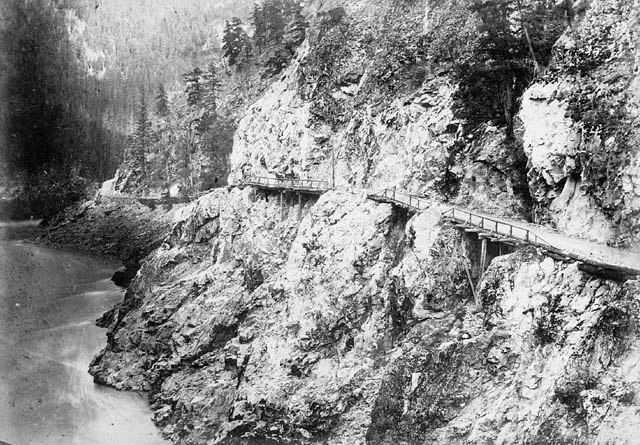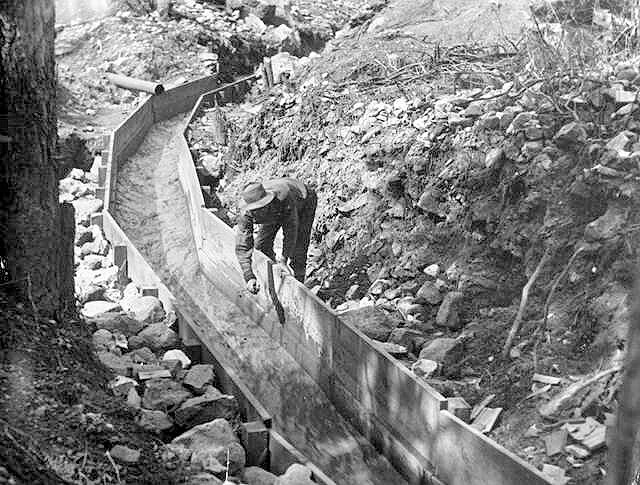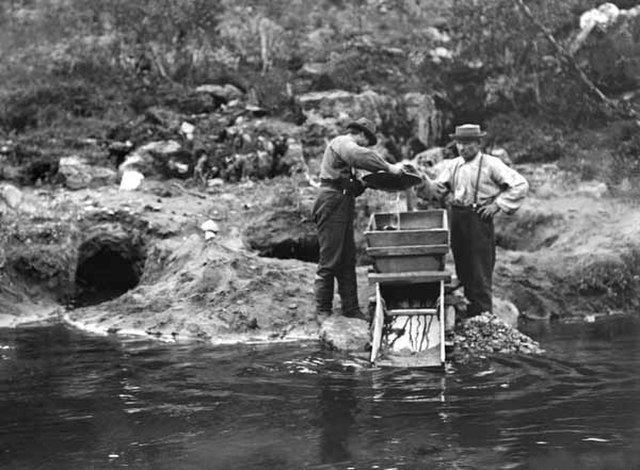The Cariboo Gold Rush was a gold rush in the Colony of British Columbia, which later became the Canadian province of British Columbia. The first gold discovery was made at Hills Bar in 1858, followed by more strikes in 1859 on the Horsefly River, and on Keithley Creek and Antler Creek in 1860. The actual rush did not begin until 1861, when these discoveries were widely publicized. By 1865, following the strikes along Williams Creek, the rush was in full swing.
Barkerville (1865), shown rebuilt after the Great Fire, with its new, straightened and wider, Main Street. The creek in the foreground is Williams Creek, which is paralleled by Main Street throughout.
The Cariboo Road in the Fraser Canyon, 1867
A gold rush or gold fever is a discovery of gold—sometimes accompanied by other precious metals and rare-earth minerals—that brings an onrush of miners seeking their fortune. Major gold rushes took place in the 19th century in Australia, Greece, New Zealand, Brazil, Chile, South Africa, the United States, and Canada while smaller gold rushes took place elsewhere.
The fastest clipper ships cut the travel time from New York to San Francisco from seven months to four months in the 1849 California Gold Rush.
A man leans over a wooden sluice. Rocks line the outside of the wood boards that create the sluice.
Swedish gold panners by the Blackfoot River, Montana in the 1860s
Gold prospecting at the Ivalo River in 1898






